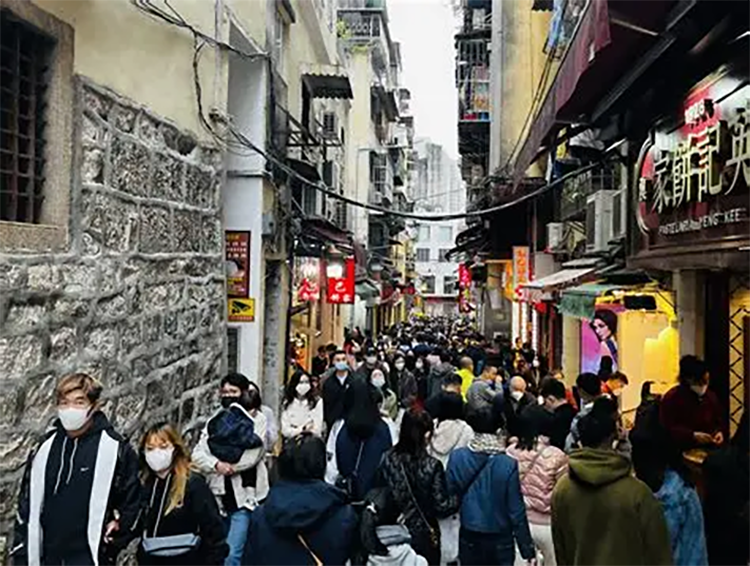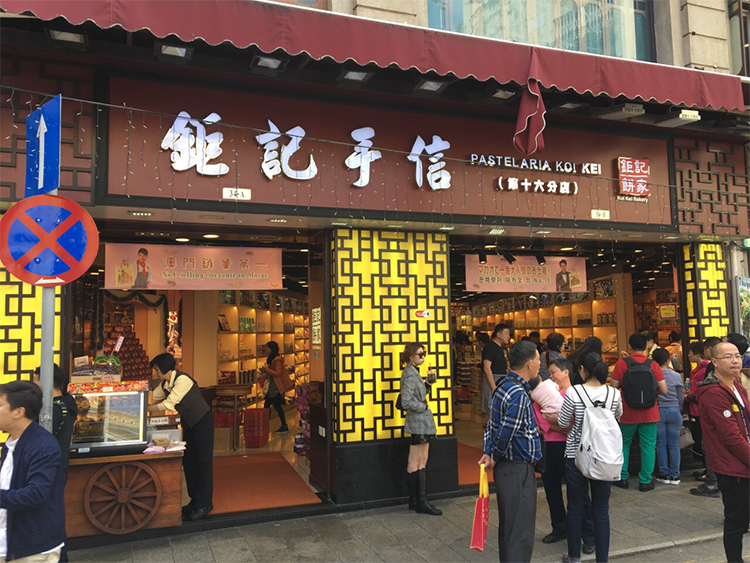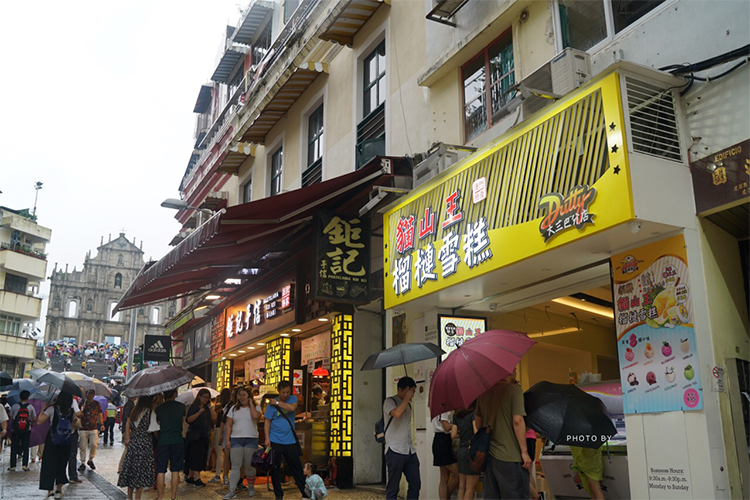Macau’s Da Sanba Street: Best Portuguese Pastries, Souvenirs & Local Flavors
Macau’s Dà Sānbā Street: Souvenirs & Portuguese Flavors
Introduction: A Scented Historic Corridor
In Macau, one street seems permanently perfumed with almond cookies and savory pork jerky—Dà Sānbā Street, locally known as the “Souvenir Street.” This 120-meter lane sits beside the UNESCO-listed Ruins of St. Paul’s and is Macau’s liveliest marketplace. Under Portuguese arcades, century-old bakeries mix with neon signs as visitors squeeze past, all chasing authentic Macanese tastes. The cobbled pavement recalls Portugal’s maritime past, and the chorus of free-tasting calls reveals the local warmth.
1. Soul of the Street: Macau’s Souvenir Scene and Flavors
“A pastry museum at the foot of a world heritage site”—Dà Sānbā Street defines Macau by its sweet-and-savoury tastes. Key attractions:
– Souvenir Empire: The highest concentration of traditional snack shops in Macau, selling almond cookies, egg rolls, pork jerky, and phoenix rolls—many recipes over a century old.
– Free Tasting Culture: Staff hold out trays and call “Try it!” in Cantonese; trying-before-buying is part of the experience.
– Historic Flagship Stores: Koi Kei Bakery and Choi Heong Yuen (est. 1935) began here; their retro shop fronts feel like small museums.
2. History and Local Life: From Portuguese Trading Post to Trendy Street
– Maritime-era imprint: The street layout dates to 16th-century Portuguese colonization. The Portuguese-style cobblestones (Calçada Portuguesa) and arcades feel like a little Lisbon—especially on rainy days.
– Market symphony: In the morning, locals sip tea with freshly bought almond cookies; afternoons see tourists hauling luggage and shopping; at night, neon lights turn the arcades cinematic.
– Hidden details: Look for blue Portuguese tiles (azulejos) and cast-iron balconies—these East-West juxtapositions capture Macau’s hybrid culture.

3. Architecture and Photo Spots: Portuguese Aesthetics in Frames
– Arcade promenades: Pale-yellow arcades form a continuous sheltered walkway—perfect for photos rain or shine.
– Instagram angles:
– Overlook from the steps near the Ruins of St. Paul’s to capture the street’s depth and the rows of arcades.
– Koi Kei’s vintage storefront: traditional characters and pastry displays make an instant Hong Kong–Macau vibe.
– Pavement art: Look down—Portuguese cobbles form waves and ship motifs, a delight for detail lovers.
4. Shopping and Tasting: The “Oscars” of Macau Souvenirs
– Must-buy list:
– Almond cookies — Koi Kei, Choi Heong Yuen: charcoal-roasted aroma, melt-in-your-mouth texture.
– Pork jerky — Heong Kei: freshly grilled, honey-glazed and cut to order.
– Egg rolls — Best Bakery: crisp layered rolls, often limited batches.
– Workshop experiences: Some shops (like Koi Kei Museum Branch) demonstrate traditional wooden-mold cookie making—watch chefs press and handcraft almond cookies.
– Shopping tip: Be cautious of bundled discount packs; loose, freshly made items often taste better than cheap sets.

5. Day and Night Personality: From Shopping Frenzy to Nighttime Magic
– Day (10:00–18:00): Peak tour hours; lively like a fair—great for sampling and people-watching.
– Night (19:00–22:00): Lights transform the arcades into a romantic scene; during Christmas and Lunar New Year you may see lanterns and Portuguese blue-tile decorations.
– Local tip: Visit before 9:00 a.m. to enjoy quiet arcades and freshly baked egg rolls.
6. Practical Guide: Shop and Eat Like a Local
– Getting there:
– Bus: Take routes 3 or 10 to the “Senado Square” stop, then a 5-minute walk.
– Casino shuttle buses: Many hotels run free shuttles to nearby Avenida de Almeida Ribeiro (New Road).
– Payments: About 90% of shops accept Alipay/WeChat Pay; carry MOP 100–200 in cash for small stalls.
– Language: Staff usually speak basic English; Cantonese and Mandarin are more common.
– Recommended time: 1–2 hours (allow more for serious shoppers).

Conclusion: The Right Way to Discover Macau’s Flavors
Dà Sānbā Street is more than a souvenir lane—it’s a sweet fortress built from almond paste and pork jerky and a final chapter of Portuguese maritime history. One bite of an egg roll can taste like 400 years of cultural fusion. Whether you’re here to shop or photograph, the street will tell you plainly: “Macau is really delicious!” Add it to your Macau Peninsula walking route (Senado Square → Dà Sānbā Street → Ruins of St. Paul’s → Fortaleza do Monte) and let your taste buds be the guide.


